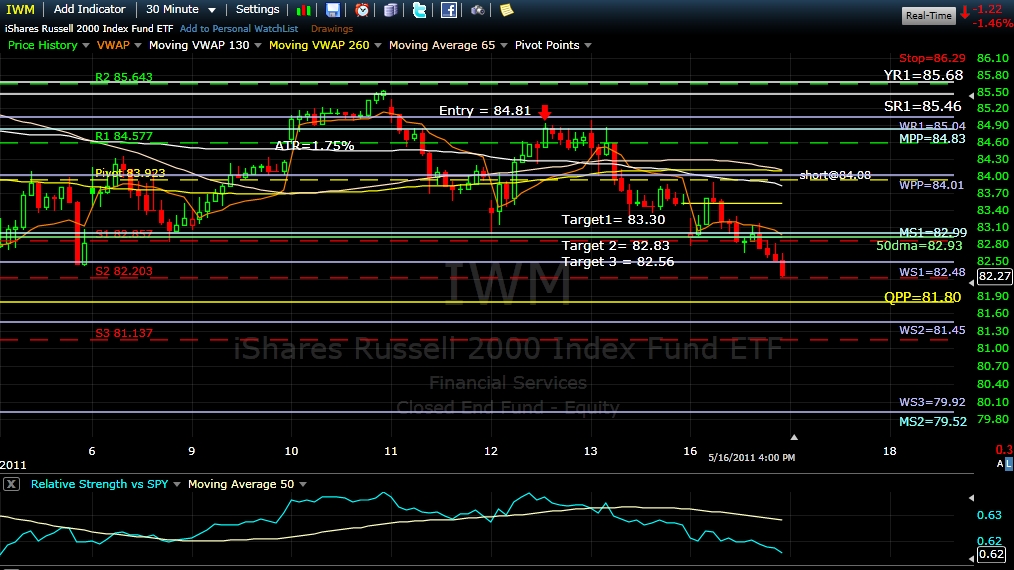-
Dave,
I’ve had the same temptation as yours and decided to go to bed early before the close to resist such evil’s seduction! On the attached chart I have annotated the last robot’s short entry at 84.81 on 5/12 around mid-day and the three probable expected 3-day gains (expected 3D gain times probabilities) that were recorded by the robot. I have labeled them as “Target”. They are 83.30, 82.83 and 82.56. They all were hit within 24 hours of being issued. That’s why the robot refuses to sell on target.
Selling on target can provide some immediate gratification but often at the expense of soon-to-follow frustration. Let’s suppose you had sold on target last Friday at 83.30 or today at the open at 82.83. There was no advantageous re-entry price limit proposed by the robot below 84.08 yesterday, and it was never hit; so you would have missed most of yesterday’s selloff or about 3% opportunity cost on your TZA position!
QPP (81.80) can indeed be expected as the most likely area for re-accumulation by market makers and HFT algo programs and for producing some bounce. However, this is just a potential support if large institutional sell orders do abate compared to previous days. If the institutional selling orders appear strong on their books, they will easily let price fall to WS2 (81.45) or even WS3 (79.92) and MS2 (79.52) if necessary in what would become some climaxing panic selling, exactly what you want to see when short. If WS3 is hit, it has 99.5% statistical chances of being the low for the week.
So, the robot will stick to its policy of staying in a trade as long as edges do persist instead of looking for just average performance by exiting prematurely on targets. Today’s probabilities will be most interesting to analyze! Also notice how the RS line keeps declining.
My comments about how to adjust limit prices based on the open were for derived ETFs, RWM, UWM, TWM, TNA and TZA. The robot page on this new site is now automatically suggesting the equivalent entry price for these ETFs, but without any guarantee of course. But if there is a big gap at the open, I would personally always adapt the limit price as a multiple/inverse proportional to the opening price. And if my limit is not hit on the other ETF while it is hit on IWM, I would instantly execute the orders at market price.
Billy
 Posting Permissions
Posting Permissions
- You may not post new threads
- You may not post replies
- You may not post attachments
- You may not edit your posts
Forum Rules




 Reply With Quote
Reply With Quote